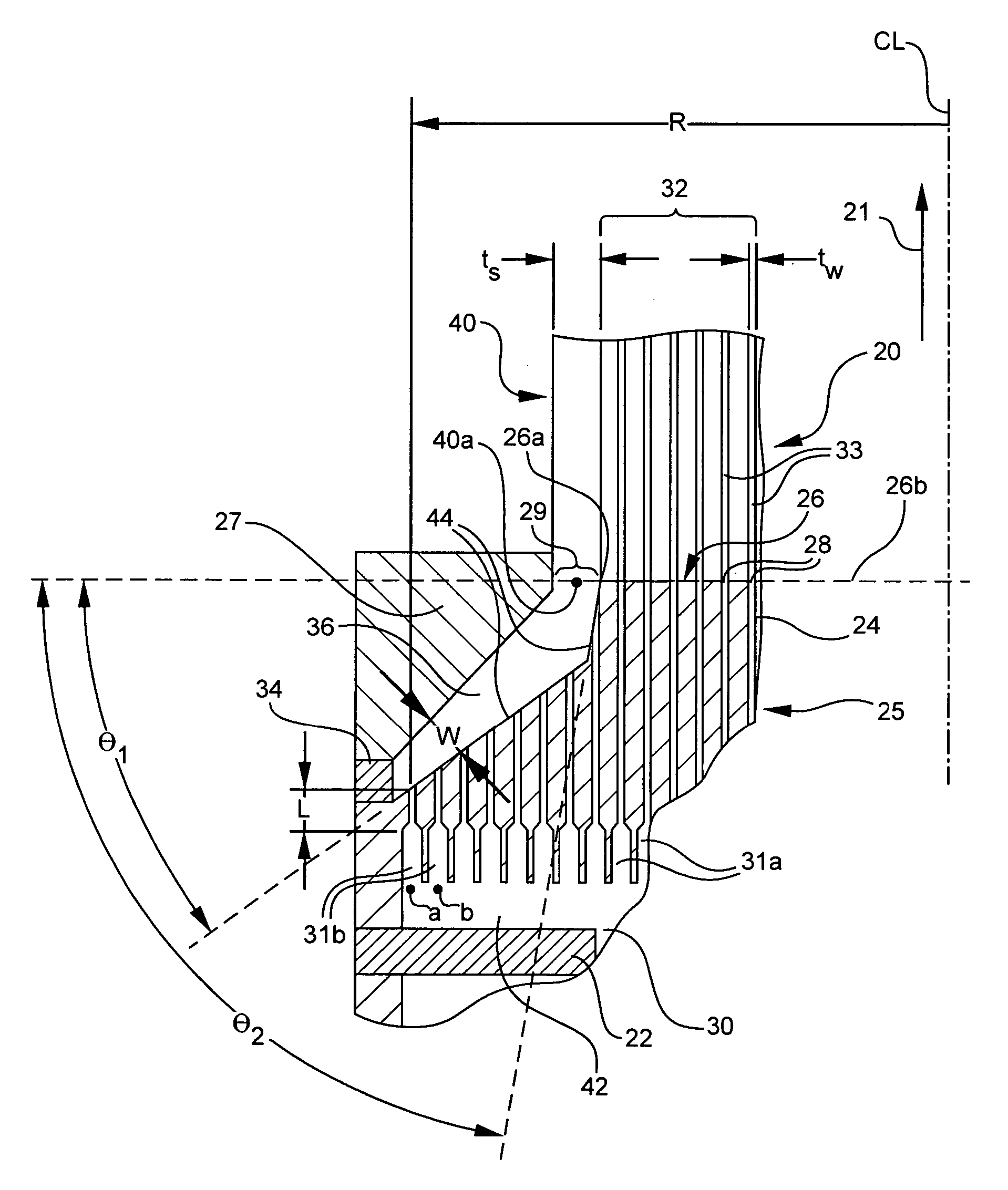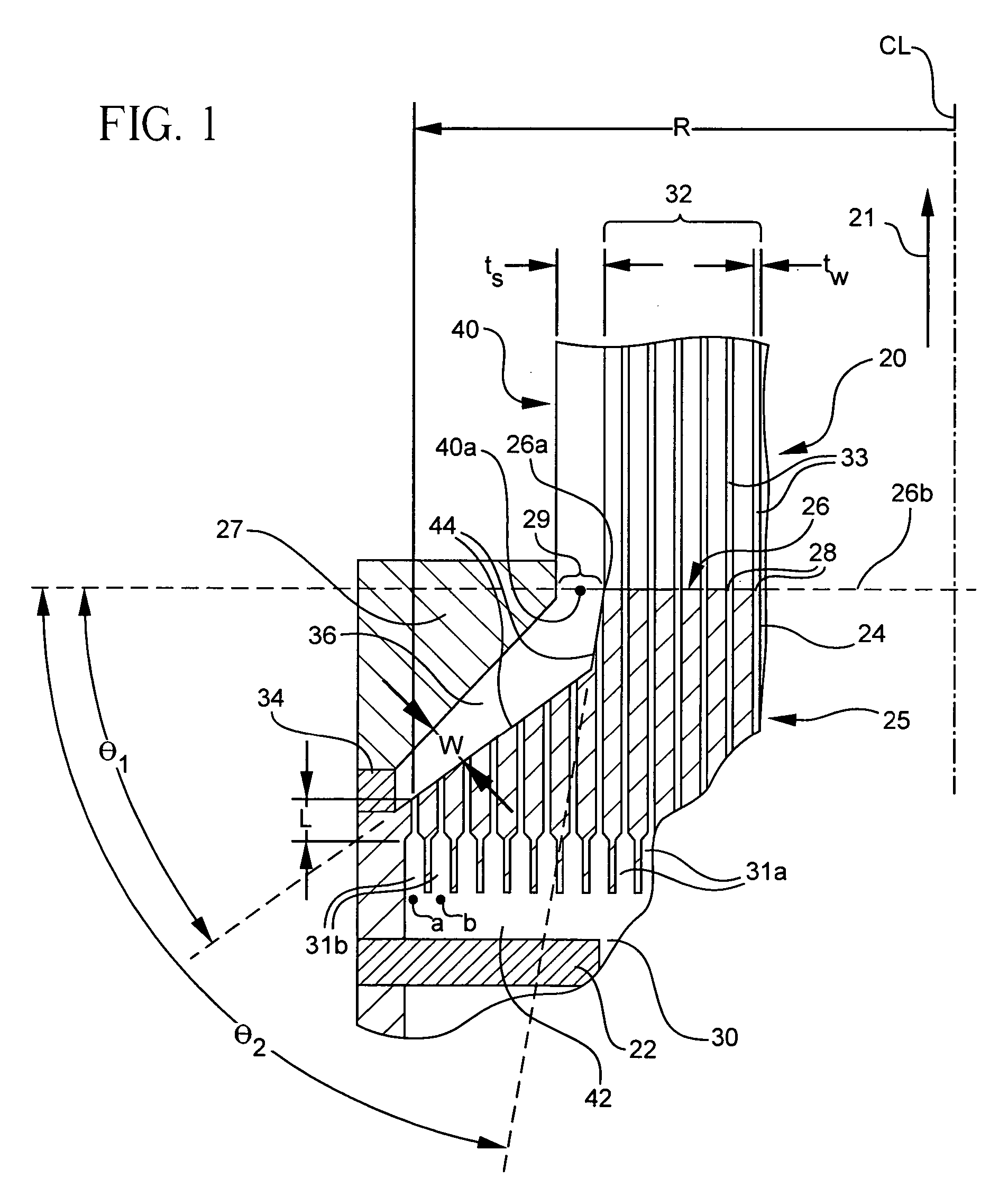Methods for extruding a honeycomb article with a skin surrounding a central cellular structure
a honeycomb article and skin technology, applied in dough shaping, manufacturing tools, food shaping, etc., can solve the problems of affecting the quality of honeycomb articles, so as to improve the alignment of batch particles in the skin, reduce the propensity for skin tears and skin/web, and improve the degree of particle alignment
- Summary
- Abstract
- Description
- Claims
- Application Information
AI Technical Summary
Benefits of technology
Problems solved by technology
Method used
Image
Examples
Embodiment Construction
[0023]While the invention has wide application to the production of ceramic honeycomb products from a variety of batch mixtures of various compositions, it can be used to particular advantage with batch mixtures comprising substantial powder fractions of highly platey crystals, such as talc crystals. For example, the thermal expansion characteristics (particularly CTE) of extruded cordierite honeycomb articles along the extrusion direction depend, in large part, on an appropriate preferential alignment of talc particles within the skin and webs thereof.
[0024]Preferential talc crystal alignment, which results from batch shearing during extrusion of the batch through the relatively thin discharge slots of honeycomb extrusion dies, may result in a corresponding preferential alignment of the cordierite crystals that develop within the honeycomb webs and skin as the green honeycombs are fired. The degree of skin and web alignment is best measured by the I-ratio, as is described in U.S. P...
PUM
| Property | Measurement | Unit |
|---|---|---|
| cut angle | aaaaa | aaaaa |
| cut angle | aaaaa | aaaaa |
| cut angle θ1 | aaaaa | aaaaa |
Abstract
Description
Claims
Application Information
 Login to View More
Login to View More - R&D
- Intellectual Property
- Life Sciences
- Materials
- Tech Scout
- Unparalleled Data Quality
- Higher Quality Content
- 60% Fewer Hallucinations
Browse by: Latest US Patents, China's latest patents, Technical Efficacy Thesaurus, Application Domain, Technology Topic, Popular Technical Reports.
© 2025 PatSnap. All rights reserved.Legal|Privacy policy|Modern Slavery Act Transparency Statement|Sitemap|About US| Contact US: help@patsnap.com



